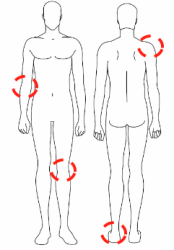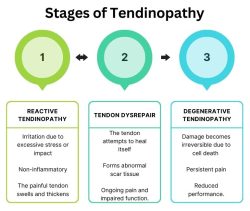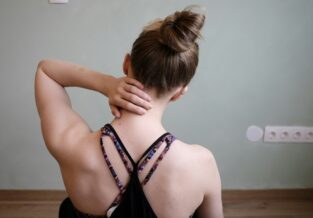All About Tendinopathy
Published on
19 May 2023


Written by
Chee Yan Ting
Senior Physiotherapist
Call us on: (03) 9975 4133
What is Tendinopathy? Tendinopathy is a condition that affects the tendons, which are thick cords of tissue that connect your muscles to bones. A healthy tendon is composed mostly of parallel collagen fibres closely packed together. Every muscle in the body has a tendinous portion, therefore tendinopathy can occur in any area of the body.
Common areas affected by tendinopathy that we see here are Pure Physio include:

- The ankle: Achilles Tendon
- The knee: Patellar Tendon
- The shoulder: Supraspinatus Tendon
- The elbow: Tennis Elbow or Golfer’s elbow
There are many differential diagnoses of tendinopathies and it is often mis-diagnosed. Therefore, it is important to have your condition assessed by an experienced clinician for an accurate diagnosis.
What are the Symptoms of Tendinopathy?
Tendinopathy is characterised by impaired function of the affected tendon and pain. Pain often initially eases with activity/movement however becomes aggravated the night of, or morning after, the activity. Pain is also often reported upon your first movements after rest or sleep.
The severity of injury will depend on what stage of tendinopathy your tendon is in. Therefore it is useful to understand the different stages.
Understanding the Three Stages of Tendinopathy
There are 3 stages of tendinopathy described in the literature. Appropriate rehabilitation, including gradual loading of the tendon, can ease symptoms and improve capacity/function, effectively moving the tendon injury from ‘stage 2’ back down to ‘stage 1’.

Treatment for Tendinopathies.
If you are wanting to return to your sport or running safely, it is important to have your individual situation assessed. A tailored and progressive rehab program is required, alongside a gradual return to sport, to successfully recover from tendinopathies.
There are many adjunct treatments including shockwave therapy and corticosteroid injections. It has been found however that multiple corticoid injections can weaken tendon structure, leading to a risk of tendon rupture. Shockwave therapy, provides initial symptom relief and can be effective, when combined with an appropriate rehabilitation loading program, at increasing the capacity of your tendon, therefore aiding a return to play.
If you’re needing assistance in the management of a potential tendinopathy injury, see us in the clinic to get back on track.
About the Author
Chee Yan Ting — Senior Physiotherapist
Chee has a wealth of experience and is particularly adept at helping clients with long-standing neck pain, shoulder rehabilitation as well as management of acute knee and ankle injuries. Chee is a qualified ski instructor with a passion for treating winter sport injuries.


